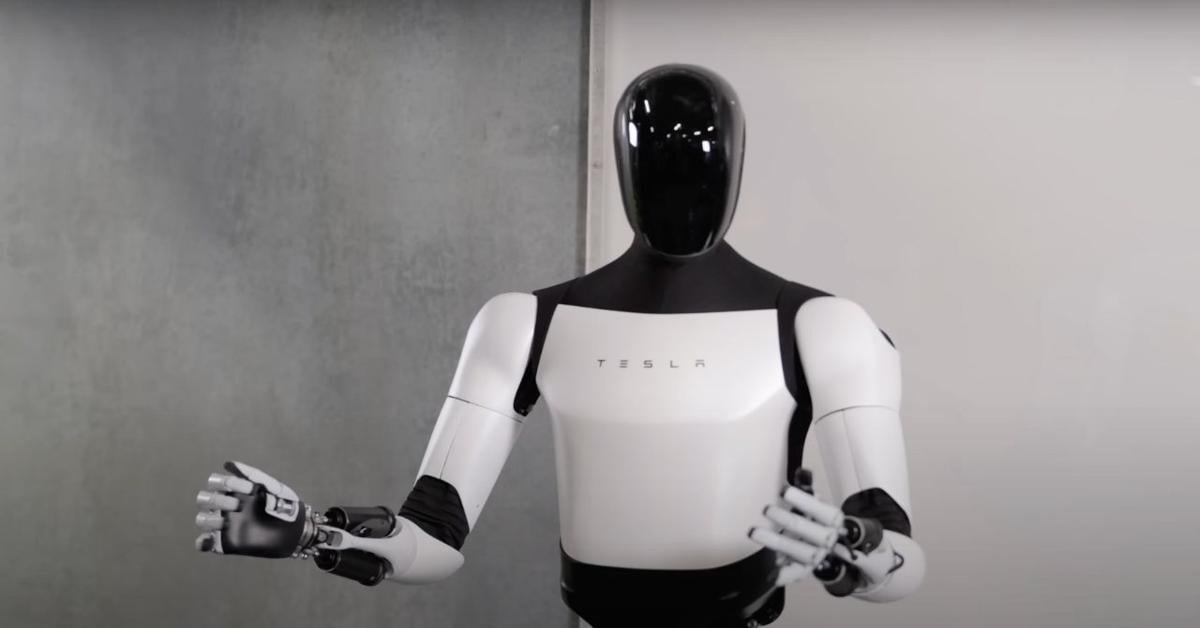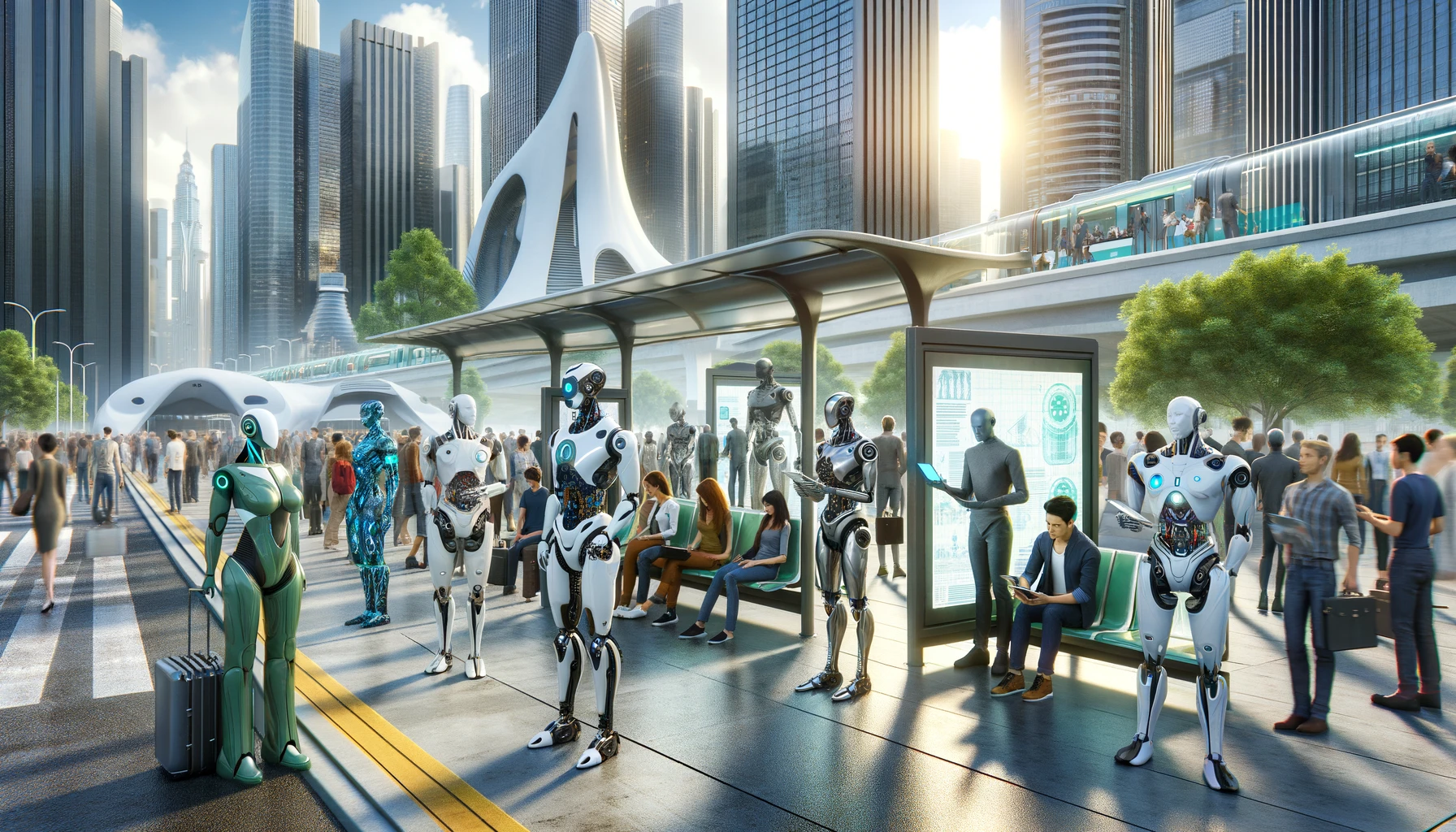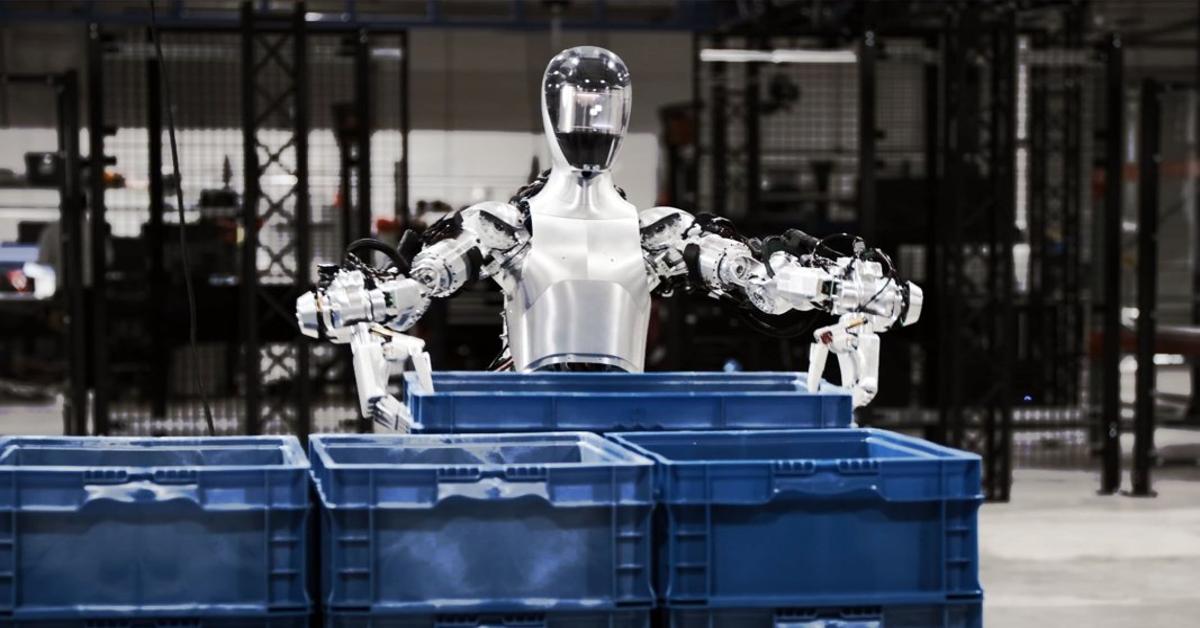
Elon is a major science fiction geek, naming products like Grok, Plaid, Falcon, and Starship, so it’s no surprise he set named his robot Optimus, from the kinder, gentler ilk of science fiction rather than call it something like Terminator. “We want for it [Optimus] to be an android, the kind of android that you've seen in sci-fi [series] like Star Trek: The Next Generation, like Data.”
Elon has acknowledged that some humanoid robots (e.g., Atlas by Boston Dynamics) may appear to do more in terms of functionality—ranging from flips to parkour—but as we shall see, that isn’t the mission for Optimus.
Elon’s intent for Optimus to mass produce highly useful, generalized, cost-effective labor. His ultimate goal is to manufacture millions of them and to sell them for as little as $20,000 each.
If Tesla can achieve this vision of manufacturing Optimus robots at scale, then the company will completely reshape the global economy and society. After all, historically labor has accounted for over 50% of global GDP.
In the future robot-rich world, Optimus and its siblings would likely perform those jobs that are dull, dangerous, or boring—handling work that is repetitive and unsafe... ultimately freeing up humans to do safer, more productive work.
In today’s blog, I want to discuss the evolution of Optimus and some of the latest developments to the humanoid robot.
Let’s dive in…
NOTE: Exploring the newest advancements in humanoid robots is a key area of focus at my private Abundance Summit next month. The Summit is now officially Waitlist Only. Learn more and apply for the Waitlist here.
Unveiling Optimus: King of the Robots
On Friday, September 30, 2022, in his Palo Alto-based Tesla factory Elon Musk took the stage for his much anticipated “AI Day.”
While much of that day’s conversation would be about Dojo, Tesla’s supercomputer built for computer vision video processing to improve its Full Self-Driving system, the real star of the show would be Tesla’s humanoid robot, once called TeslaBot, and now renamed Optimus.
A year earlier, Musk had teased the idea of Teslabot when an actor in a robot suit had danced on stage pretending to be a Tesla robot. But today was about a lot more. It was about the materialization of Elon’s vision.
On this much anticipated Friday evening in late September 2022, Elon was joined onstage by two members of Tesla’s AI Team, who promptly let the audience know that this would be “the first time we try this robot without any backup support, cranes” or any other mechanisms.
Elon narrated as the Optimus walked on stage, waving toward the audience. “So here you're seeing Optimus production Unit One, which has the ability to move all the fingers independently, and an opposable thumb on the both left and right hands so it's able to operate tools and do useful things.”
Elon continues, “Our goal is to make a useful humanoid robot as quickly as possible and we've also designed it using the same discipline that we use in designing the car, which is to say to design it for manufacturing, such that [it would be] possible to make the robot in high volume at low cost with high reliability. So that's incredibly important. I mean you've all seen very impressive humanoid robot demonstrations and that's great, but what are they missing? They're missing a brain. They don't have the intelligence to navigate the world by themselves and they're also very expensive and made in low volume. Whereas Optimus is designed to be an extremely capable robot but made in very high volume, probably ultimately millions of units and it is expected to cost much less than a car … I would say probably less than $20,000 would be my guess.”
Perhaps the most important implication of Optimus and Elon’s vision is its impact on the global economy. On this topic, Elon has been consistent: “Any economy is defined as its productive entities times the productivity, capita times productivity per capita. At the point at which there is not a limitation on capita, it's not clear what an economy even means at that point. An economy becomes quasi-infinite... this means a future of abundance, a future where there is no poverty, where you can have whatever you want in terms of products and services.”
“It really is a fundamental transformation of civilization as we know it and obviously we want to make sure that transformation is a positive one and safe.”
Optimus Gets an Upgrade
During its 2022 reveal, the Optimus prototype stood at a striking 5 feet 8 inches, with its cranial region housing Tesla’s advanced AI chip.
Its capabilities were impressive: lifting up to 150 pounds, carrying 45 pounds, and moving at speeds of 5 miles per hour. The envisioned movements for Optimus spanned a broad spectrum: from walking, squatting, side-stepping to more complex actions like lifting objects, ascending stairs, or using tools such as drills.
But the game changed in 2023.
A video from May last year showed the humanoid robot’s enhanced object manipulation, superior environment navigation, and refined motor control. It was intriguing to watch engineers wearing motion capture equipment instructing the robot on how to perform various tasks, reflecting the depth of human-machine collaboration.
Unlike its predecessor at the AI Day event in 2022, this version confidently moved forward, recognizing and picking up items. Built with 28 actuators, it’s able to deadlift 150 pounds (68 kg) and manipulate two hands, each with 10 fingers and 11 degrees of freedom.
The development of Optimus has been a journey into uncharted technological territories for Tesla. Elon shared his astonishment about the lack of suitable off-the-shelf parts for building a robot, which led Tesla down the path of innovation. "I was surprised at the fact that we had to develop every part of the robot ourselves," Elon remarked. He explained the extent of this challenge: "We couldn't actually find a source of electric motors for any amount of money." This necessity to innovate every component, from electric motors to sensors, underscores the uniqueness and ambition of the Optimus project.
Optimus’ battery pack is located in the middle of its torso, sized at 2.3 kilowatt hours, which is perfect for about a full day's worth of work. The robot’s “brain” or central computer is also located in its torso leveraging Tesla’s famous autopilot hardware and the software. Its computer does everything that a human brain does, processing vision data, making split second decisions based on multiple sensory inputs and also communications, which includes wireless connectivity as well as audio support.
The humanoid robot’s hand design was inspired by biology. Its five fingers are driven by metallic tendons that are both flexible and strong. Driven by 6 actuators with 11 degrees of freedom, Optimus has a wide and powerful grip, while also being optimized for precision gripping of small, thin and delicate objects.
On this subject Elon says, “One of the tests goals I have is, can it pick up a needle and a thread and thread the needle just by looking? We’re perhaps a year away from doing that just from looking.”
Regarding the robot’s vision and ability to learn, Elon draws a parallel between Tesla’s cars and Optimus. "The controls are different, but the video in controls output. The car is a robot on four wheels, and Optimus is a robot with hands and legs," Elon said. Regarding how Optimus learns, "Optimus will figure out how to do things by watching videos."
When asked whether Optimus will ever get a personality and be able to laugh at our jokes while it folds our clothes, Elon responded, “Absolutely. I think we want to have really fun versions of Optimus so that it can both be utilitarian and do tasks, but can also be a friend and a buddy and hang out with you. And I'm sure people will think of all sorts of creative uses for this robot. And once you have the core intelligence and actuators figured out, then you can actually put all sorts of costumes on the robot. I mean you can skin the robot in many different ways and I'm sure people will find very interesting versions of Optimus.”
Optimus Gen-2
In December 2023, Tesla unveiled its newest version of the humanoid robot: Optimus Gen-2.
This new prototype is 10 kg lighter, can walk 30% faster, and has sensors on all its fingers.
As Tesla engineer Milan Kovac posted to Twitter/X on December 31, 2023, “We’ve improved our locomotion stack, frequently walking off-gantry without falls and with a faster, increasingly more human-like walking gait … We've designed and built yet another upgraded version of the bot (Optimus Gen-2), adding an articulated neck, revamped hands w/ tactile sensing, and a tighter integration of harnesses, actuators & electronics.”
And just last week, Tesla released a new video demonstrating Optimus’ improved walking ability, with the caption “Getting my daily steps in.”
Why This Matters
The Optimus robots will likely first be used within Tesla plants, for example, helping to move parts around.
And once Optimus has mastered the factory floor, the options are endless: from deliveries and household tasks to retail uses and even farming.
As Elon stated during Tesla’s Q4 2023 earnings call, “It has the potential to far exceed the value of everything else at Tesla combined…it’s by far the most sophisticated humanoid robot that’s being developed.”
So when can we expect to see commercial versions of Optimus?
In that same earnings call, Elon said that there is a “good chance of shipping some number of Optimus units” in 2024, but at the same he acknowledged that Optimus is a new product and that “there’s a lot of uncertainty when you’re in uncharted territory.”
In our next blog in this Age of Abundance series, we’ll look another one of the leading companies in the humanoid robot market: Figure AI.
70% of all cancers that are fatal turn out to be the result of cancers that are not routinely tested for by today’s medical system. Today, advanced diagnostics are able to evaluate your health on a regular basis, with the goal of finding disease at the earliest stage possible. Every year, I go through a Fountain Life “upload” as part of their APEX Membership program, and I urge you to do the same. Get started with Fountain Life and become the CEO of your health:
I discuss how AI, Robotics, and other exponential tech are creating a world of abundance on my podcast. Here’s a conversation I recently enjoyed:
A Statement From Peter:
My goal with this newsletter is to inspire leaders to play BIG. If that’s you, thank you for being here. If you know someone who can use this, please share it. Together, we can uplift humanity.
Topics: Abundance Entrepreneurship Abundance 360










